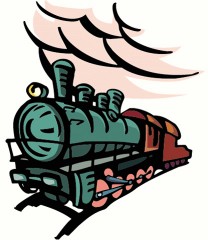
On Saturday, March 14, I drove to Visalia, California, a distance of 327 miles. It was a 10-hour round-trip. My purpose was to speak to the Visalia Succulent Club on Nature’s Geometry in Succulents.

I got to go over The Grapevine, a 40-mile stretch of Interstate 5 over the Tehachapi Mountains from California’s San Joaquin Valley to Grapevine.

It’s a monster of a road because there’s a lot of semi traffic doing 5-10 mph in the slow lane, and semi traffic doing 10-30 mph in the second lane. Traffic in the other lanes is cruising by at 55-65 mph, with some doing up to 90 mph in the fast lane. The weather can be atrocious because of the height of the mountains, raining at the top (4,000 feet) but clear on both sides, and even snow at some times of the year. Couple the weather with the wide range of speeds, and there always are various accidents.
The meeting was at 6:00 p.m., and since I got there at 10:15 a.m., I had a lot of time to explore. Visalia and its sister city of Exeter were quite beautiful with all the trees that were blooming.




Exeter, with a population of 10,000, had a very cool little downtown area. There were murals on the exterior of 32 buildings. I didn’t find them all, but the following one, #15 and titled “Tracks of Time,” was my favorite.

In Exeter, I found a bookstore with lots of local history books, so I bought one, a hard-cover edition of a book that itself is difficult to find.

The bookstore also had a cat. I’m one of those who have to take time out of my busy schedule to pet a cat, so this little one got 15 minutes of love and attention from me. Look at the expression on his face as I told him that I had to go but would make him a Facebook star.

With the COVID-19 pandemic in full swing, when I got home at 4:00 Sunday morning, I decided to self-isolate, not because I think I might have caught something in the Central California Valley but rather because at my age (65 years and 8 days) and with my high blood pressure; skin cancer and seborrheic keratoses; BPH; and constant coughing, sneezing, and trouble breathing due to a deviated septum from a broken nose sometime in my early childhood (according to the otolaryngologist), I’m in the high-risk category. My constant coughing and sneezing also might cause concern to anyone within hearing distance. I have pills to help control the coughing and sneezing, but I never know how long before they take effect and when they might expire.
I’m keeping a journal of my days at home in self-isolation., trying to keep things in perspective.
Day 1—I have decided to self-isolate. Since I am retired, between watching television (although no sports), gardening (lots of weeds to pull and flora to plant), and taking care of Little Queen Olivia (who doesn’t seem to be real excited about me being home all day), self-isolation shouldn’t be too hard.
Day 2—After a day of drinking margaritas and watching the Hannibal series on Prime TV, I can definitely state that drinking margaritas all day does not make you poop. Thusly, I am out of margaritas, but I have 1,618 rolls of toilet paper.
Day 3—Little Queen Olivia is completely oblivious to the fact that I am home and willing to give belly rubs.

Day 4—Self-isolation isn’t so bad, but I do find it interesting that there are 8,471 grains of rice in one box and 8,552 grains in the other box.
Day 5—It’s been raining all this week, with 3½ inches these past two days, and it’s raining hard right now. Pulling weeds and planting flora is going very slowly. Ah well, that means I definitely still have things to do during the next nine days of my self isolation.
My self-isolation will end on March 28, and three days later my 90-day free trial of the year 2020 ends. Where do I cancel?
Hope everyone is doing well in these weird times we’re living in.











































































